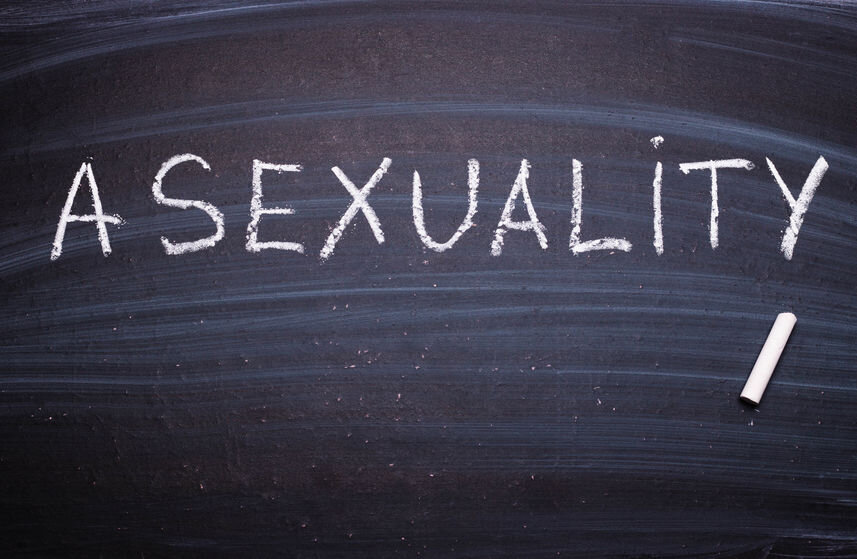Five Things Science Has Taught Us About Asexuality
May 8, 2020 by Justin Lehmiller
Research has found that around 1% of the population is asexual, a term usually defined as either a lack of sexual attraction or a lack of desire for partnered sexual activity [1]. Asexuality is something that many people are not familiar with and, as a result, there are lots of myths and misconceptions about it. So, let’s take a moment to review some key facts about asexuality that science has taught us.
1.) Being asexual is not the same as being celibate. Although people in both groups tend to avoid sexual activity, they are motivated to do so for very different reasons. Whereas asexual persons report not experiencing sexual attraction at all, celibate persons do—and they make a conscious decision not to act upon those feelings of attraction for some period of time. There are a large number of reasons someone who feels sexual attraction might choose celibacy (e.g., religion, health considerations, substance abuse recovery, etc.)—but these are not factors that drive asexuality.
2.) Asexuality does not mean that one has a sexual dysfunction or a fear of sex. In one study, asexual and non-asexual women were shown a series of erotic films [2]. While watching these films, participants’ genital arousal levels were recorded. Participants also reported on their subjective feelings of sexual arousal and their emotional state. The results revealed no differences in psychological or genital arousal between groups, which indicates that being asexual does not necessarily mean that one is unresponsive to erotic stimuli or that one’s genitals are non-functional. Moreover, whereas sexual women showed an increase in positive affect while watching these films, asexual women experienced no changes (positive or negative) in their emotional state, indicating that asexuality is not an aversion to sex.
3.) Being asexual does not necessarily mean that one is sexually inexperienced and/or single. Research has found that many persons who report a lack of sexual attraction are involved in relationships, and some of them have sex, too. It’s important to keep in mind that lacking sexual attraction is not the same thing as lacking romantic attraction—asexuals often still desire romantic relationships. And, if partnered with someone who is sexual, asexuals may be sexually active either because they want to please their partner or, potentially, because they feel a sense of obligation. That said, it is also possible for asexual persons to be aromantic, meaning they don’t desire romantic relationships, either.
4.) Studies have found that many self-identified asexual persons masturbate, and some have sexual fantasies, too. Compared to sexual persons, though, asexuals are less likely to engage in both activities. Masturbation is often a very different experience for many asexuals, too, in that it is sometimes a “non-directed” activity (i.e., they are not necessarily thinking about a specific erotic image while it is happening).
5.) Many scientists believe that asexuality should be considered a distinct sexual orientation. As some support for this idea, research has found that some of the same biological factors correlated with homosexuality are also correlated with asexuality (e.g., higher odds of being left-handed and, at least for men, being a later-born child). This suggests that there may be a complex series of biological factors that contribute to the emergence of an asexual orientation. Check out this article to learn more about why some scientists argue that asexuality is a unique sexual orientation.
To learn even more about asexuality, I highly recommend Anthony Bogaert’s book, Understanding Asexuality.
Want to learn more about Sex and Psychology ? Click here for previous articles or follow the blog on Facebook (facebook.com/psychologyofsex), Twitter (@JustinLehmiller), or Reddit (reddit.com/r/psychologyofsex) to receive updates. You can also follow Dr. Lehmiller on YouTube and Instagram.
[1] Bogaert, A. F. (2004). Asexuality: Prevalence and associated factors in a national probability sample. Journal of Sex Research, 41(3), 279-287.
[2] Brotto, L. A., & Yule, M. A. (2011). Physiological and subjective sexual arousal in self-identified asexual women. Archives of Sexual Behavior, 40, 699-712.
Image Source: 123RF/alexmia
You Might Also Like:

Dr. Justin Lehmiller
Founder & Owner of Sex and PsychologyDr. Justin Lehmiller is a social psychologist and Research Fellow at The Kinsey Institute. He runs the Sex and Psychology blog and podcast and is author of the popular book Tell Me What You Want. Dr. Lehmiller is an award-winning educator, and a prolific researcher who has published more than 50 academic works.
Read full bio >


